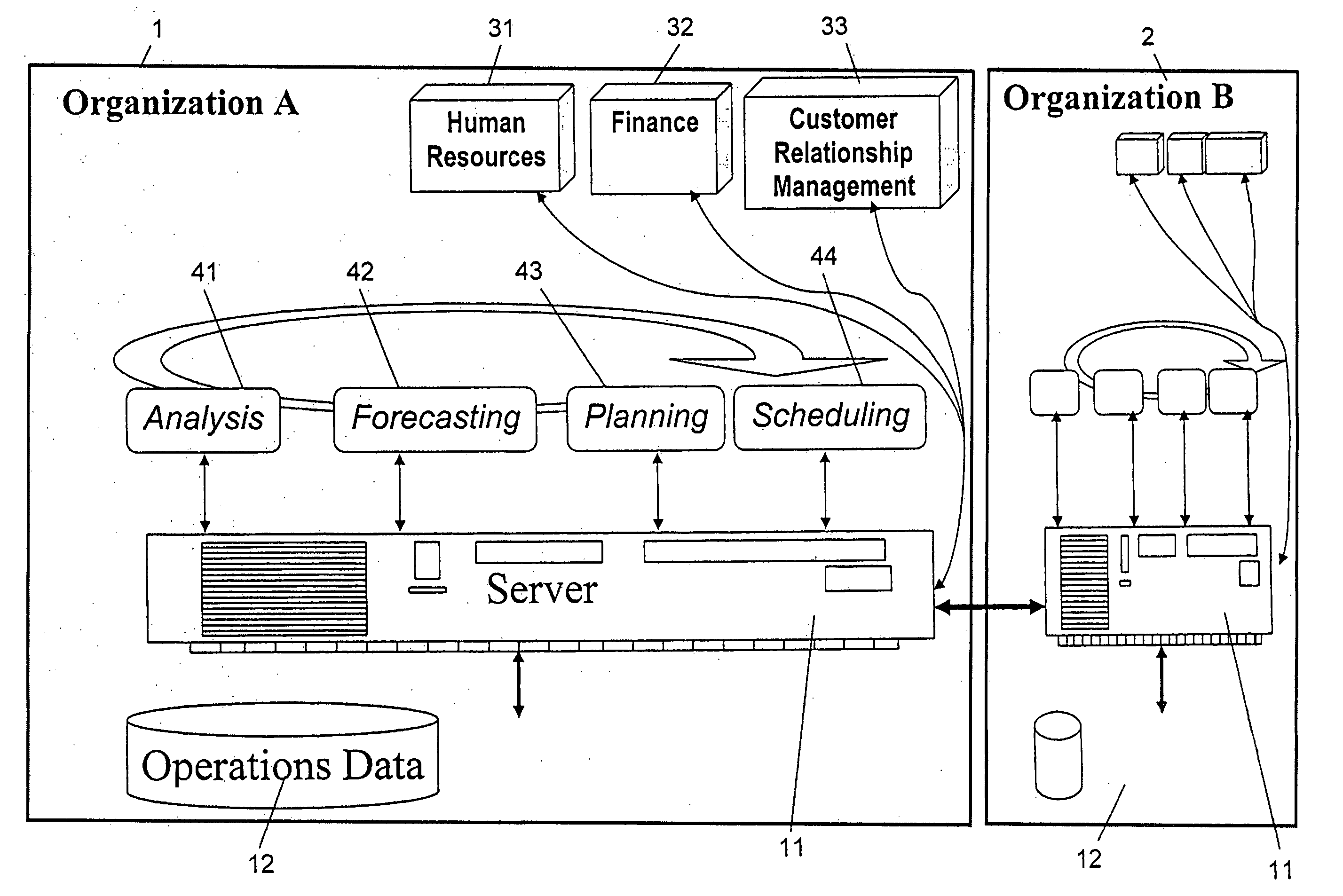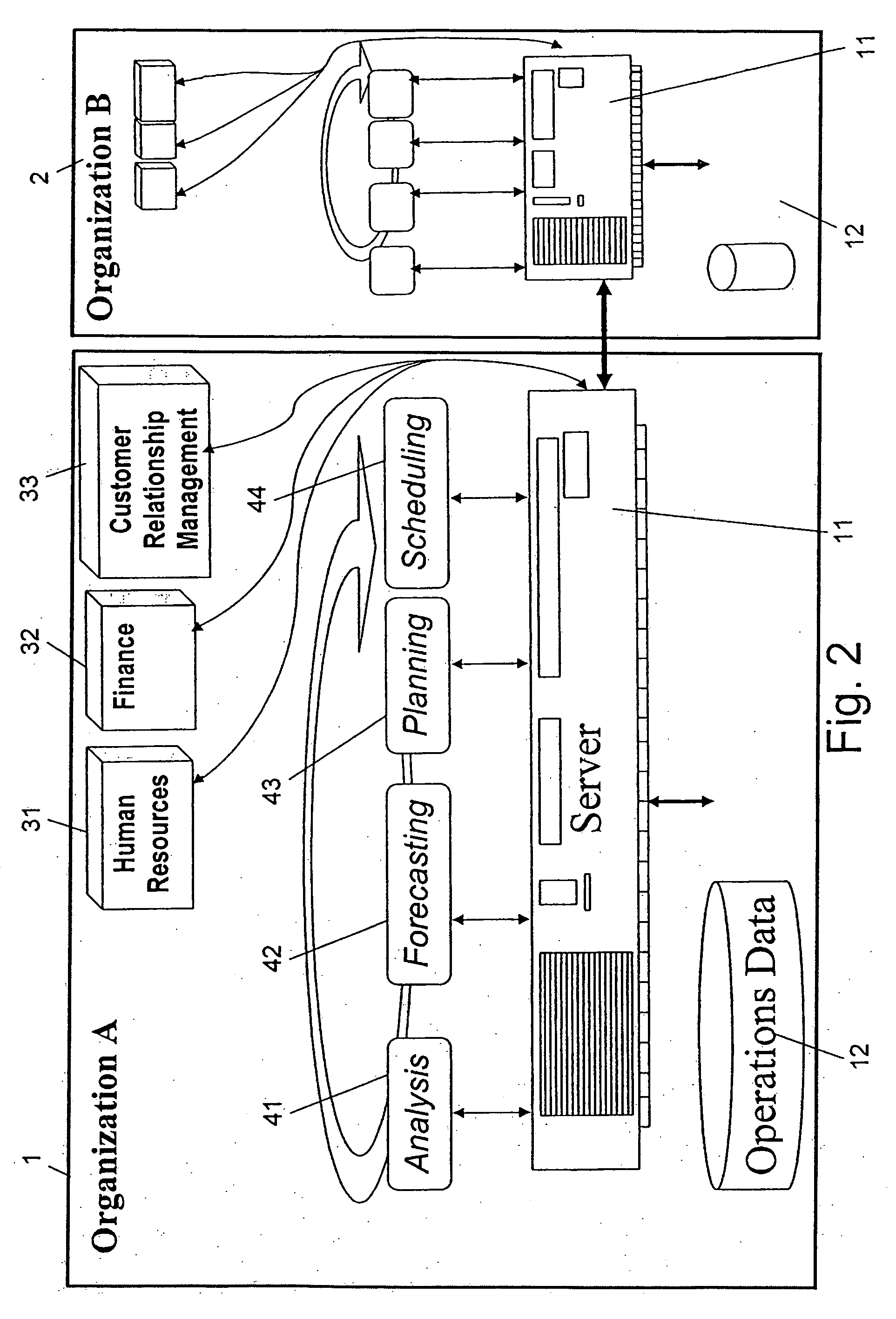Method and system for assigning human resources to provide services
a human resource and service technology, applied in the field of managing service organizations, can solve the problems of not being able to predict the specific time of a specific customer, not being able to meet customer expectations, and not being able to predict the micro level
- Summary
- Abstract
- Description
- Claims
- Application Information
AI Technical Summary
Benefits of technology
Problems solved by technology
Method used
Image
Examples
Embodiment Construction
[0066] In order to facilitate the reading of the description to follow, a number of terms are defined below:
[0067] W-dimensions: The different types of decisions that characterize customer demand and the decision inherent in answering a customer demand, e.g., specific staff (““Who”), specific times (“vnen”), specific task (“Winat”), specific customer (“for Whom”), specific location (“Where”), spare parts or tools (“With what”).
[0068] Data mining: The analysis of data for relationships that have not previously been discovered. For example, the sales records for a particular brand of tennis racket might, if sufficiently analyzed and related to other market data, reveal a seasonal correlation with the purchase by the same parties of golf equipment
[0069] Data mining results include: [0070] Associations, or when one event can be correlated to another event; [0071] Sequences, or one event leading to another later event; [0072] Classification, or the recognition of patterns and a result...
PUM
 Login to View More
Login to View More Abstract
Description
Claims
Application Information
 Login to View More
Login to View More - R&D
- Intellectual Property
- Life Sciences
- Materials
- Tech Scout
- Unparalleled Data Quality
- Higher Quality Content
- 60% Fewer Hallucinations
Browse by: Latest US Patents, China's latest patents, Technical Efficacy Thesaurus, Application Domain, Technology Topic, Popular Technical Reports.
© 2025 PatSnap. All rights reserved.Legal|Privacy policy|Modern Slavery Act Transparency Statement|Sitemap|About US| Contact US: help@patsnap.com



